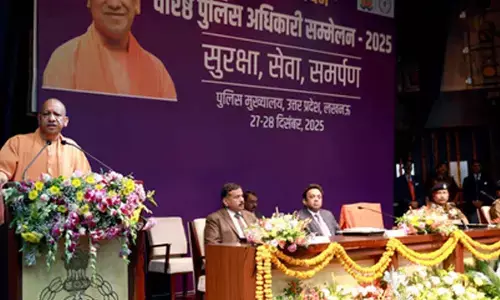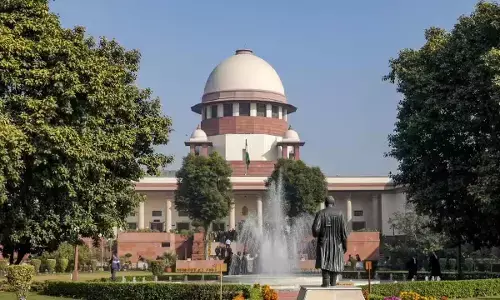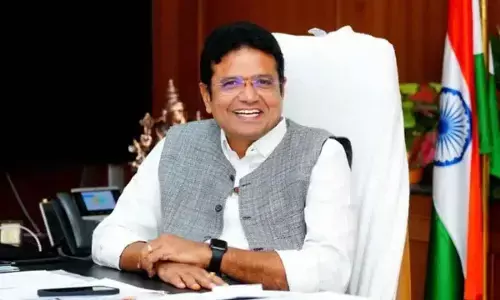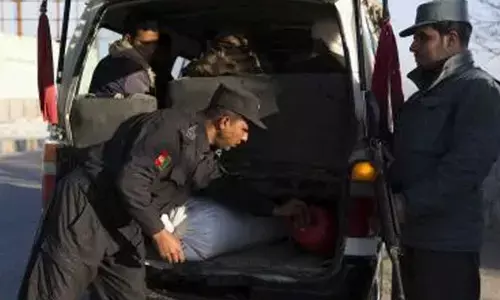Tribal development issues and ways forward
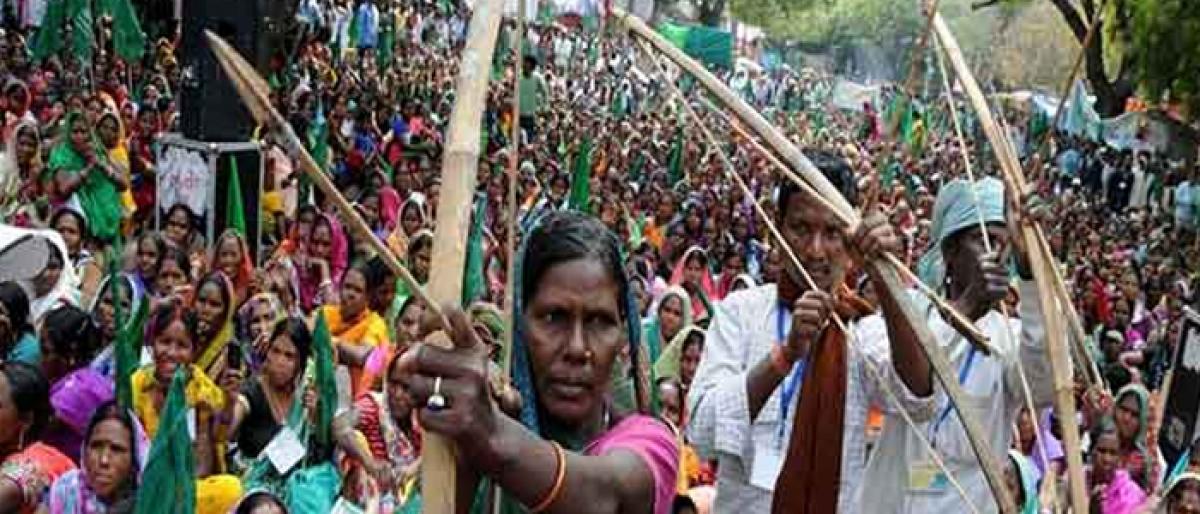
Vishwa Adivasi Diwas International Day of the Worlds Indigenous Peoples has its origin in the UN general assembly resolution No49214 of 23 December 1994, marking the first meeting of UN Working Group on Indigenous Populations on the Promotion and Protection of Human Rights on August 9th 1982 The day was observed as the international day of Indigenous people across the world to promote and sa
Vishwa Adivasi Diwas (International Day of the World's Indigenous Peoples) has its origin in the UN general assembly resolution No.49/214 of 23 December 1994, marking the first meeting of UN Working Group on Indigenous Populations on the Promotion and Protection of Human Rights on August 9th 1982. The day was observed as the international day of Indigenous people across the world to promote and safeguard the interest, culture, customs and traditions of Indigenous people.
There are 370 million indigenous people in the world. In Indian the indigenous people are recognised constitutionally as scheduled tribes under Article 342 and the word ‘scheduled tribe’ is defined in Art 366(25) of the of Indian Constitution. As per 2001 census, 84 million2 such scheduled tribes are there in India constituting 8.2 % of country’s population.
Tribal development has been the main agenda of governance since from the fifth five year plan where the Tribal Sub Plan concept was introduced in the year 1974-75. Accordingly the special administrative attention was drawn to channelize the financial resources to invigorate the socio-economically vulnerable Scheduled Tribe communities across the country. The scheduled areas declared as so by the President of India under Article 244 of constitution are given special attention in few states by way of forming Integrated Tribal Development Agencies (ITDA).
ITDA constitutes a block of area with Scheduled Tribe population of more than 50% and administered by a designated officer. In the country there are 194 such ITDA’s (ITDP’s) covering the states of Andhra Pradesh, Orissa, West Bengal, Madhya Pradesh, Maharashtra etc,. The Governor of such state will have the plenary power to regulate the operation of state acts and rules in these agency areas there by safeguarding the interests of tribals, their culture and customs.
Following are the few major schemes and sources of funds to tweak the development of tribal areas and improve their livelihood in the states with significant portion of tribal population.
Grant in Aid under Art 275(i)
The central government provides grants in aid charged on consolidated fund of India for the development of additional education infrastructure, residential schools, hostels, health infrastructure strengthening and augmenting agriculture income and water conservation.
Conservation-cum Development-Plan (CCDP)
For the development of PVTG’s state government has to prepare Conservation cum development plan. As per which, the central government funds are allocated for housing, land distribution, land development, agricultural growth, cattle development, connectivity, installation of nonconventional sources of energy for lighting purpose, social security or any other innovative activity meant for the comprehensive socioeconomic development of PVTGs.
Special Central Assistance to Tribal Sub Plan (SCA to TSP)
Those states who have passed Tribal Sub Plan legislation for earmarking the funds for tribal development will get central assistance for tribal education,health,agriculture, horticulture, animal husbandry, fisheries, dairy and other income generating schemes toaugment tribal household economy; For improving administrative structure, institutional framework & research studies of tribals.
Special Developmental Package (SDP)
Government of India provides funds under SDP for the development of backward districts in the state. The infrastructure projects, Soil and water conservation projects, tourism and other income generation activities, health and educational infrastructural activities can be developed in such backward districts.
Integrated Action Plan (IAP)
The erstwhile Left Wing Extremism affected areas are treated under IAP with the funds received in coordination with the ministry of home affairs for establishing critical infrastructure in the remote and inaccessible tribal areas. The district committee headed by Collector and SP has the liberty to use the funds for the developmental projects in the district.
Additional Central Assistance (ACA)
In order to implement the centrally sponsored schemes and flagship programs, the central government provides the additional fund to the states. Such flagship schemes applicable for tribal area are Mahatma Gandhi National Rural Employment Guarantee Scheme, Sarva Shiksha Abhiyan, Mid day meal, Rastriya Madhyamik Shiksha Aabhiyan, Integrated Child Development Scheme etc.
National Scheduled Tribes Finance and Development Corporation (NSTFDC)
Under the ministry of tribal affairs, GOI, the corporation provides concessional term loans for the economic upliftment of the PVTG’s. The income generating activities, small entrepreneurial initiatives, allied agricultural activities, service sector activities are being financed.
Tribal Sub Plan (TSP)
The state through a legislation mandates itself that the portion of state plan out lay proportionate to its tribal population is earmarked for taking up the activities in tribal areas. Every department in such states mandatorily earmark the budget for the developmental activities in the tribal areas.
State Scheduled Tribes Cooperative Finance Corporation Limited (TRICOR)
The corporation is mainly implementing the economic support schemes and livelihood activities to the tribals of below poverty line in all sectors including Agri, Horti, Animal husbandry, Service sector and Skill development. The bank linkage subsidy schemes are sponsored for all the tribals. The portion of investment is given as TRICOR subsidy, a portion as loan from the nationalised banks and a portion has to be incurred by the beneficiary himself. The number of such loans allotted to each district is proportionate to the ST population in that district.
Issues
In spite of constitutional mandates and legislative obligations to safeguard and promote the tribal development, few stumbling blocks are constantly scourging the progress at the ground level. The major challenges in the tribal areas are:
Remoteness: The tribal hamlets and habitations are located either in a valley or on the hill tops in most of the places. Due to which they are excludes from major developmental activities, improved cultivation practices, education and health facilities.
Exploitation: The agriculture produces, local non timber forest produce and other valuable forest resources are being siphoned out by the middlemen from the innocent tribals for the paltry prices thus leaving the tribals exploited financially.
Superstition: Poverty, health issues, illiteracy and under development is often ascribed to the fate, star and supernatural events. Even preventable deaths are sometimes construed as may be due to bad omen; the scientific temper is a remotest aspiration. Hence the mainstream thinking and developmental spirit has seldom percolated down.
Road and Telecom Connectivity: Due to tough terrain and difficult areas of tribal locations, it requires huge resources to establish connectivity to all the habitation. The contractors are not coming forward to take up works as their profit margin reduces. Further, the habitations are largely located in the forests hence forest clearance remain bottle neck to establish the connectivity. The telecom connectivity is also as sparse as the roads. Hence the penetration of digital literacy is hampered in typical tribal areas.
Lack of health awareness: Unscientific practices, local beliefs, self medication, customary doctor etc have deprived them from availing the institutional health facilities.
Illiteracy: It is the main hurdle in improving living standards of tribals in the tribal belts. The spill over effect of illiteracy is ‘lack of confidence’ to adopt progressive steps.
Primitive agriculture: the traditional areas where tribal live are mostly forests and hill terrains, having no proper potential for the adoption of modern agriculture on a large scale. Even now the PVTG’s are practicing shifting cultivation (Podu farming) on the hill slopes of eastern states.
Small holdings: due to their subsistence agriculture, the land holdings if any are very small and just to meet the family need. Hence the penetration of improved agricultural practices and commercial crops is poor.
Unemployment: Inability to catch up with the skilled jobs in the open market due to lack of exposure to formal skill training, the unemployment is haunting the qualified tribal youths.
Way Forward
The forums like world tribals day have to be used as platform for intellectual debates, discussions, policy advises, vision and resolutions. There is a need to take up massive awareness creation activities among the tribal to make them realise their development potential. Area based approach should be adopted to create infrastructure and road connectivity.
Effective monitoring of the funds meant for various tribal development activities is necessary. Comprehensive skill development programs customised to the local tribal markets and local consumers have assured future for the tribal youth. Informal education through village institutions and Self Help Groups need to be intensified in the tribal areas by focused approach. The entrepreneurship programmes has to be designed in such a way to adapt for the primitive skills of the tribals. Every district has to have a tribal resource information centre where the tribal youths can get the required information on the career and livelihood opportunities in a single window.
The direct benefit transfer in the tribal areas is still an incomplete exercise due to incomplete mobile connectivity; it has to be strengthened with the help of ‘universal service obligation’ funds. The low performance of health indicators in the tribal areas is due to remoteness and distance from health institutions. The health facilities and health services in tribal belts have to be provided based on the area based approach instead of population based approach.
The institutional finance to tribals needs to be implemented scrupulously. The land and community rights of tribals has to be upgraded to next level to link it to the institutional finance and income generation activities. Exploitation of tribals by the non tribals have to be checked vigorously. The statutory provisions and legislations meant for the protection of tribal and safeguard the tribal life and livelihood has to be implemented in letter and spirit.
The true spirit of development of tribals lies in making them to realise their rights and ensuring that the rights are protected through institutional means. There are ample numbers of state government and central government schemes under which the funds flow to the tribal welfare. But, still the basic facilities like health, education, accessibility and livelihood has remained the major challenge in the tribal areas. Lack of exposure to mainstream society, superstitions, and inaccessibility has been a major hurdle to bring them to main stream. Creating enabling environment to realise their developmental potential is the way forward for the tribal development.
By: Dr G Lakshmisha IAS
(The author is an IAS officer and PO ITDA, Govt of A.P at Vizianagaram District)


